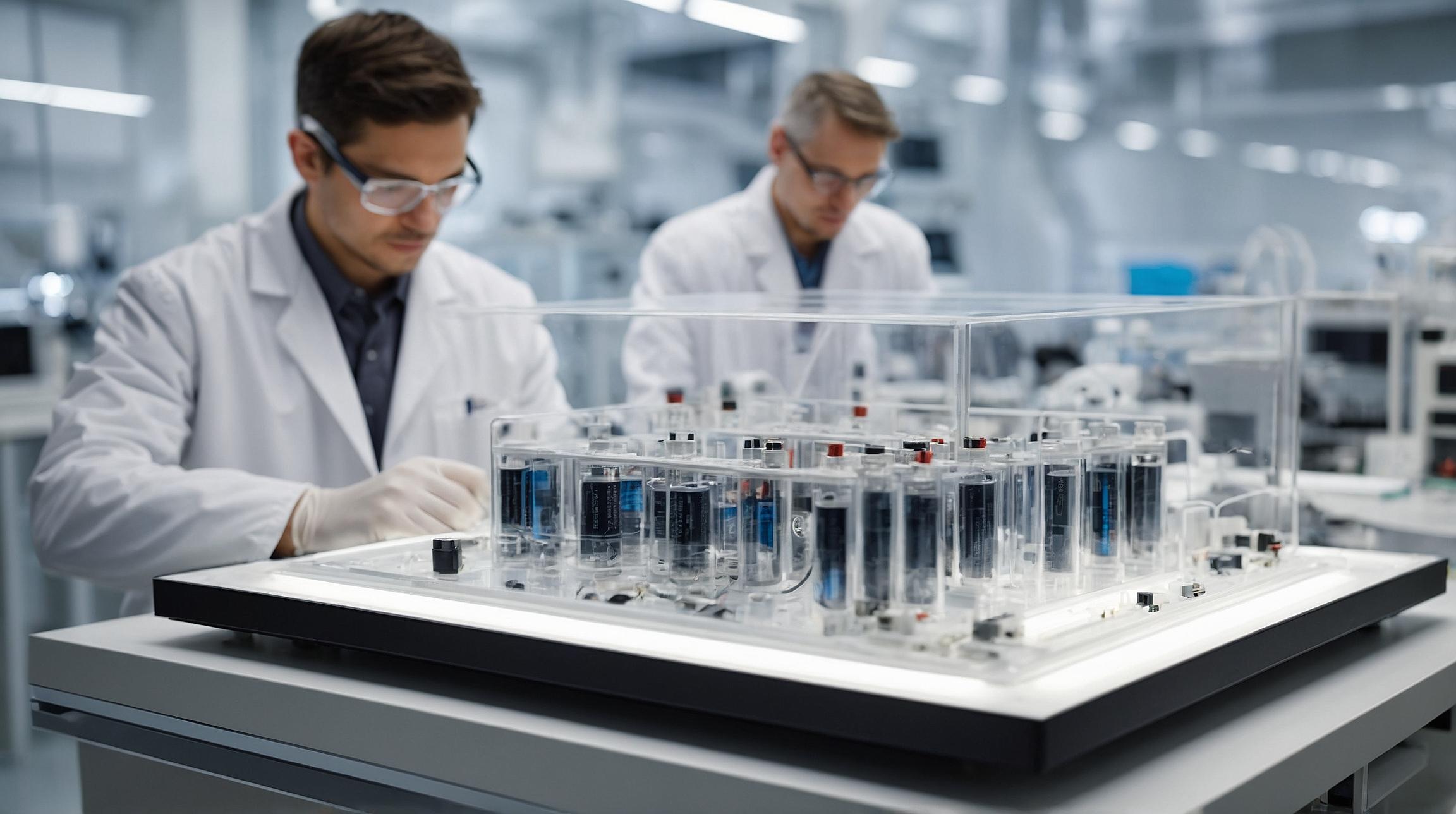Solid-State Batteries: Revolutionizing Energy Storage
Solid-state batteries (SSBs) are set to transform the battery industry, unlocking a new era of enhanced energy density, safety, and performance for electric vehicles (EVs). According to analysts at Bernstein, this next generation of batteries, particularly all-solid-state batteries (ASSBs), marks the most significant advancement in battery technology in decades.
These advanced batteries promise to deliver up to 50% higher energy density at the cell level, potentially reaching 500Wh/kg. This improvement could enable EVs to travel distances of 700-800 kilometers with rapid charging times of under 10 minutes. The technological potential of ASSBs surpasses current lithium-ion batteries (LiBs) in several crucial areas. Among these innovations, sulfide-based ASSBs stand out due to their superior safety features and longer cycle life compared to other solid-state battery technologies, such as Li-metal anode or semi-solid-state batteries.
Currently, sulfide-based ASSBs are at the A-sample stage and are expected to reach mass production by 2027.
Challenges and Cost Implications
Despite their promising outlook, SSBs face significant technological and cost challenges. Initially, the cost of ASSBs is projected to be considerably higher than existing Li-ion batteries, potentially restricting their use to high-end markets. Additionally, dendrite formation—a major technical hurdle—remains a significant issue. However, advancements in new materials are underway to create stable interfaces between battery components, which could alleviate this challenge.
A critical innovation in ASSBs is the solid electrolyte, which has taken on a new role in terms of cost and importance, much like the cathode in traditional batteries. The solid electrolyte accounts for approximately 50% of the ASSB's cost, compared to just 5% in conventional LiBs. Companies such as Idemitsu, Lake Materials, and Cosmo AM&T are emerging as leaders in this vital area of battery development.
Commercialization and Future Outlook
By the end of this decade, solid-state batteries are expected to replace lithium-ion batteries. Commercialization timelines vary among companies. Samsung SDI and CATL are aiming for mass production of ASSBs by 2027, while other industry giants like LG Energy Solution and SK Innovation have set targets for the end of the decade. Toyota, another significant player, aims to commercialize SSBs by 2027/28, although their progress remains somewhat unclear. Meanwhile, emerging companies like QuantumScape and Solid Power are making significant strides, with QuantumScape entering a substantial agreement to produce 40GWh of SSBs annually.
Understanding Key Terms
- Energy Density: This refers to the amount of energy stored in a battery relative to its weight. Higher energy density means longer travel distances for EVs.
- Dendrite Formation: In battery technology, dendrites are needle-like crystals that can form inside a battery, potentially causing short circuits.
- Solid Electrolyte: A crucial component of ASSBs, it provides a solid medium through which ions can move, enhancing safety and efficiency.
Solid-state batteries hold the promise of revolutionizing the electric vehicle industry by providing safer, more efficient, and longer-lasting energy solutions, representing a significant leap forward in battery technology.













